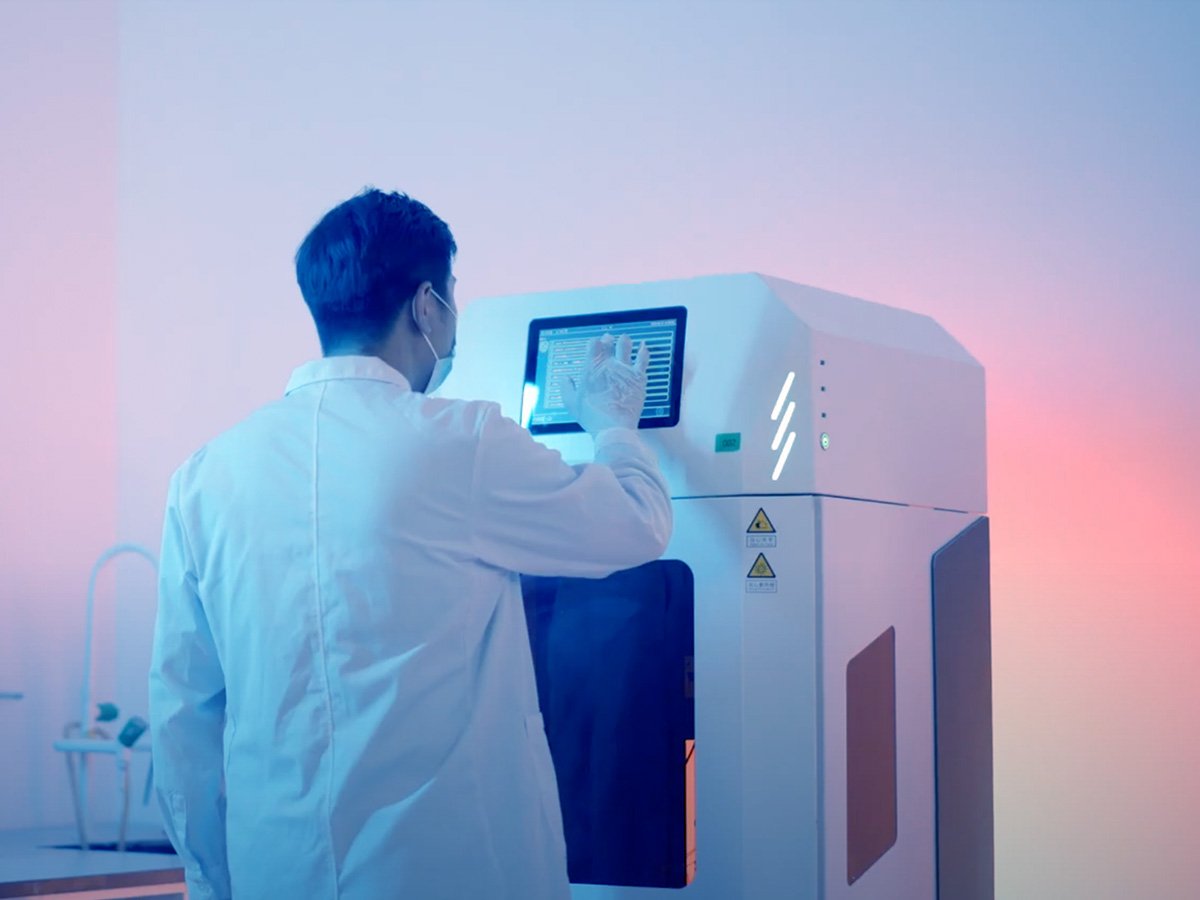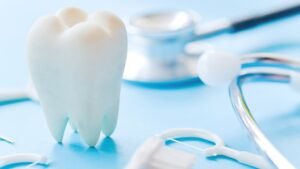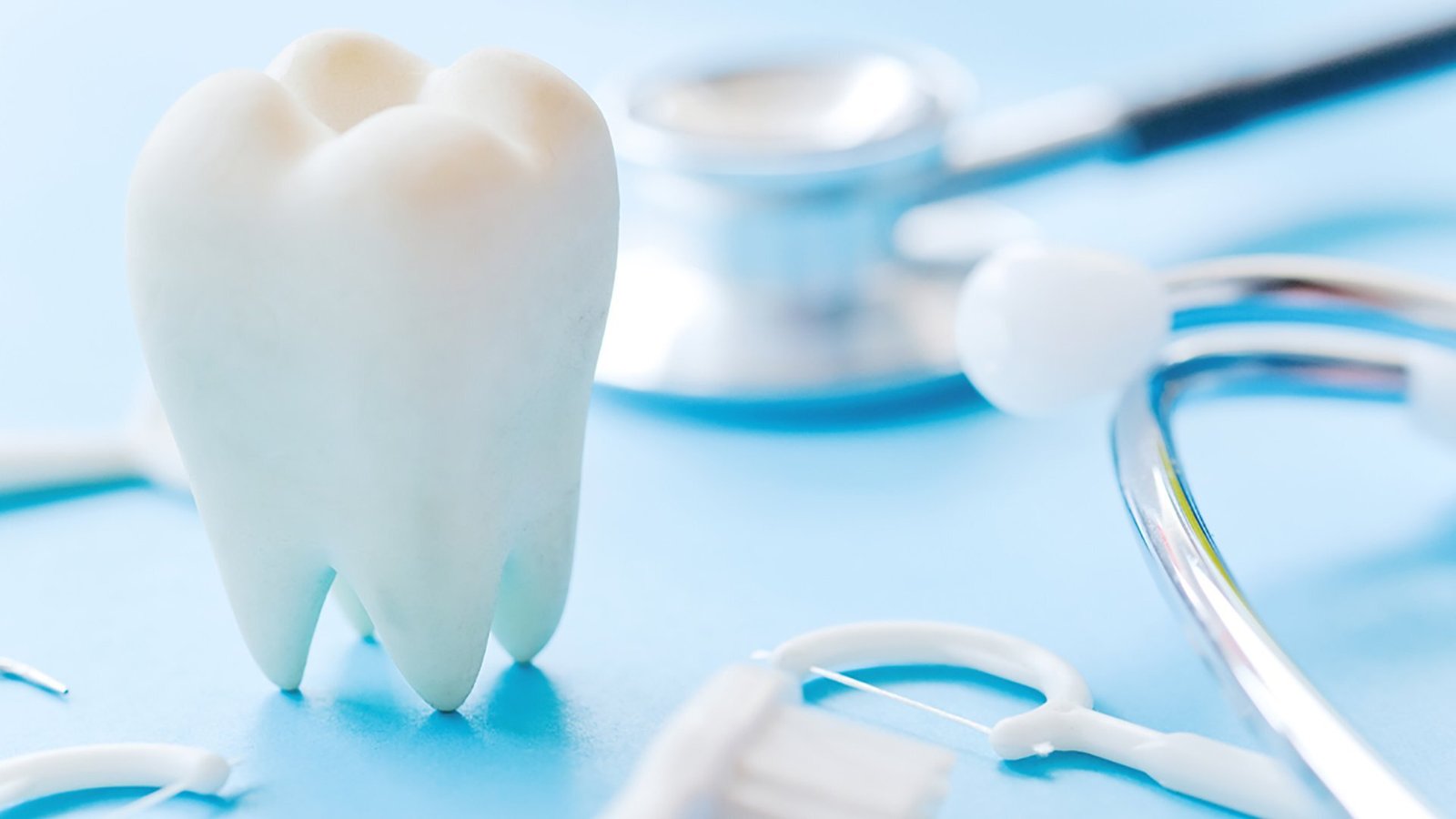The longevity of restorative procedures in dentistry, like crowns, fillings, or veneers, depends a lot on the type of dental adhesive used. Dental adhesives are used to attach the natural tooth structure to the restorative material, forming a strong bond. Choosing an appropriate dental adhesive is crucial to ensuring dental procedures like fillings or crowns last long enough. Regardless of whether you’re getting a basic filling or a full crown, the adhesive used by your dentist has a great deal of influence on the longevity of your restoration. Continue reading to understand dental adhesives, how to use them, and their importance.

What is Dental Adhesive?
Dental adhesive is a unique glue that forms a lasting bond between natural teeth and dental restorations. These materials form tiny bonds with both the tooth structure and the restoration material.
Dental adhesive is different from other glues because it is designed to function in the warm, moist mouth. These unique materials have:
- Acids to prepare the tooth surface
- Primer to make the adhesive spread and penetrate
- Bonding resins that form the sticky layer
- Liquids (water, alcohol, or acetone) that contain the active components
A dental adhesive glue performs by bonding wet tooth structure and dry repair material. This delicate task makes dental adhesives much different from regular glues.
Types of Dental Adhesive
1. Total-Etch
Total-etch adhesives, also referred to as etch-and-rinse systems, are the old-fashioned method of dental bonding. The process is:
- Application of acid (typically 30-40%) onto the surface of the tooth
- Complete removal of the acid
- Application of a primer to the tooth surface
- Application of bonding resin to create the sticky layer
The acid step cleans the tooth prep of debris and creates small holes in the tooth surface. The resultant holes increase bonding area and allow the dental adhesive to create “tags” that engage onto the tooth.
Total-etch systems tend to form very strong bonds, particularly to the external tooth layer. However, they require precise wetness control and must be applied perfectly for good results.
2. Self-Etch
Self-etch adhesives simplify bonding by uniting the acid and primer steps. Self-etch dental adhesives contain acid components that prep and settle into the tooth simultaneously without requiring individual acid steps.
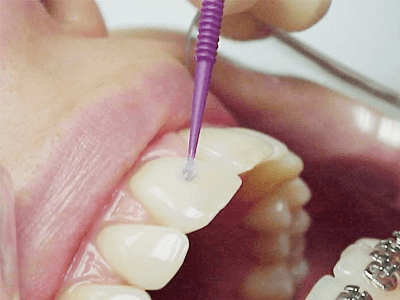
The positives of self-etch dental adhesive systems are:
- Simpler to use right
- Reduced risk of tooth pain after
- Time-saver in the dentist chair
- Reduced risk of drying the tooth out too much
Self-etch systems are available in mild, medium, or strong. They tend to bond well with the inner layer of the tooth, but may not bond so well on virgin outer layer of the tooth unless it’s first prepped.
3. Universal Adhesives
Universal adhesives are the latest dental adhesive technology. Universal dental adhesives can be used in the following ways:
- Total-etch method
- Self-etch method
- Selective-etch method (acid only on exterior tooth layer)
This flexibility makes universal dental adhesives suitable for nearly all dental repair work. They typically contain special components, such as MDP, that chemically bond to teeth and other repair substances.
Most dentists prefer universal adhesives since they require fewer products yet accomplish much type of work. These crowns and other repair fixes with dental adhesives have become popular in recent times.
How to Use Dental Adhesive?
Here is a step-by-step procedure to use dental adhesives:
- Disinfect the tooth and restoration:
Begin by ensuring that both the tooth and the restoration are dry and free of any debris. Debris and moisture can interfere with the bonding.
- Select the adhesive:
Select the appropriate adhesive based on the material of the restoration.
- Apply the adhesive:
Apply a thin, even coating of adhesive. Do not overfill, as it will ooze out when setting the restoration.
- Position the restoration:
Gently place the restoration in the right spot.
- Hold firmly:
Gently press for a few seconds. To allow the adhesive to spread evenly and begin bonding.
- Remove excess:
Use a dental instrument or soft cloth to scrape off any excess adhesive at the edges.
- Allow to set:
Let the adhesive set fully before eating or putting pressure.
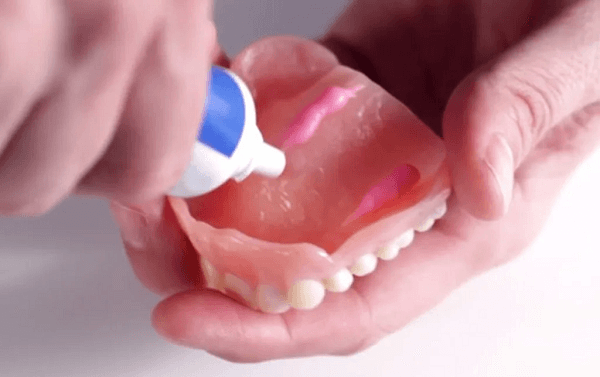
Applications of Dental Adhesives
Dental adhesives have numerous significant applications in modern dentistry:
Direct Repairs
Dental adhesive glue is required for the adhesion of tooth-colored fillings to natural teeth. This represents one of the most frequent applications of dental adhesives on a daily basis.
Indirect Repairs
For crowns, bridges, inlays, and onlays, the dental adhesives create a solid bond between the artificial tooth portion and the prepared tooth. Dental adhesive for crowns does not only secure the crown but also prevents leaks and new cavities.
Prevention
Dental adhesives cement sealants to tooth surfaces to protect deep grooves from cavities.
Braces
Special dental adhesives hold brackets in place on teeth while undergoing braces treatment, ensuring they remain there throughout.
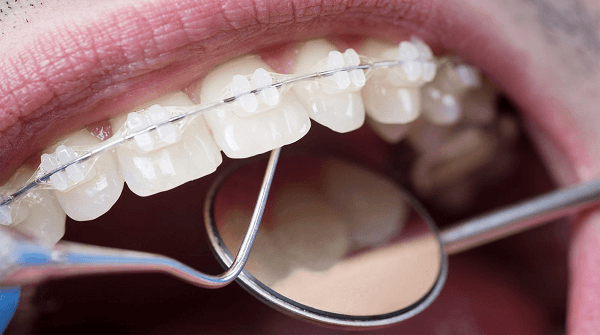
Fake Teeth
Dental adhesives hold veneers, implant components, and other tooth replacements in place, ensuring they function properly and remain stable.
Dental Fixes
Dental adhesives can repair chipped or broken fillings without needing to replace them entirely, conserving time and tooth structure.
Limitations of Dental Adhesives
Even though extremely helpful, dental adhesives do have limitations:
- Wetness Control
Most dental adhesives require the perfect amount of wetness to function optimally. Too wet or too dry can really damage how strong and long-lasting the bond is.
- Difficult to Apply
Applying adhesives frequently requires a series of steps performed exactly right. Alterations in the way it’s done can cause inconsistent results and potential failures.
- Long-Lasting Power
Although newer dental adhesive technology has improved significantly, the bond can become compromised with time due to:
- Degradation due to water
- Degradation due to enzymes in the mouth
- Chewing stress
- Material Compatibility
All dental adhesives are not compatible with all repair Dental Materials. The selection of the appropriate adhesive for specific materials is critical for long-term success.
- Shelf Life
Dental adhesives don’t last forever on the shelf and won’t be as effective if they are used after they’ve expired, which impacts both their effectiveness and dental office inventory.
FAQs About Dental Adhesives
What is dental adhesive?
Dental adhesive is a specific bonding material that forms a durable bond between natural teeth and dental repairs. Dental adhesive functions like an extremely tiny glue that aids dentists in bonding materials such as fillings, ceramics, and metals to teeth.
How long does dental adhesive last?
Dental adhesive’s durability is influenced by numerous factors, such as the kind of adhesive used, the repair material, the oral hygiene of teeth, and the habits of chewing. Most contemporary dental adhesives are able to maintain good bonds for 5-10 years or even more when applied correctly and well-maintained.
How to use dental adhesive?
Dental adhesives are materials applied by dentists under the following steps:
1. Tooth prep (cleaning and often acid etching)
2. Application of the adhesive system as the manufacturer instructs
3. Curing of the adhesive with a special light
4. Insertion of the filling or crown
For home dental adhesives (such as denture glues), carefully follow the product instructions.
How to remove dental adhesive?
In dental clinics, dental adhesives are removed with dental drills, hand instruments, or removal instruments by dental professionals. For temporary adhesives applied with removable artificial teeth, warm water and mild cleaning are typically enough.
Can dental adhesive make you sick?
Quality dental adhesives employed by professionals are safe for intraoral use. The wrong application, allergy, or the use of non-dental adhesives may lead to adverse effects. Dental procedures must be performed by qualified professionals with approved materials.
Conclusion
Dental adhesives are still improving with new products providing better performance, easier application methods, and increased versatility. These indispensable materials allow contemporary aesthetic dentistry procedures by forming stable bonds between natural teeth and restorative material. With improvements in dental science, adhesives are expected to be even stronger and more biocompatible.
Aidite is a leading company in the development of dental materials with innovative adhesive solutions that enable dentists to obtain predictable, long-term results. Dental adhesive technology is an important part of making sure your restorations work well for years to come.

